
Push to save Bribie’s WWII structures
Published 4:00pm 30 August 2022
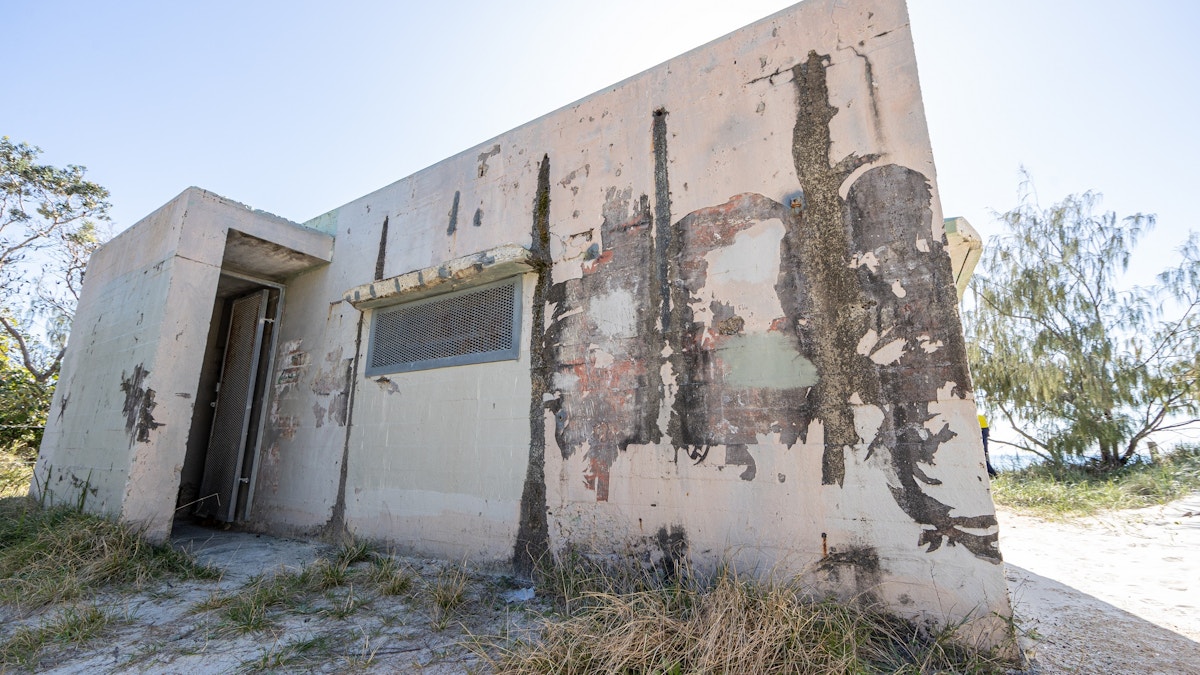
 Words by Kylie Knight
Words by Kylie Knight
Bribie Island Historical Society is spearheading a push to save three WWII structures at Woorim on Bribie Island which are deteriorating at a rapid rate.
The group says it has been calling on politicians to act to preserve the iconic structures, which were Brisbane’s last line of defence against Japanese invasion during the war, for more than a decade and is preparing a submission to the State Government.
It has become a priority following the recent demolition of two heritage-listed searchlight buildings at Fort Bribie, on the northern end of the island, earlier this month.
The State Department of Environment and Science says it made the decision to ‘collapse’ the structures for safety reasons. It’s full statement about the future of the remaining structures is at the end of this story.
“Given the age and location of the searchlight fort structures on the beach in Bribie Island National Park, natural elements and the changing coastal environment have taken their toll on these two structures,” the department said in its initial statement.
“QPWS continues to maintain the WWII fortification structures on Bribie Island when it is feasible to do so. As part of our ongoing commitment to visitor safety at the site, QPWS continues to maintain the safety barriers, railings and walking track near the fortifications.”
Moreton Daily met Bribie Historical Society President Barry Clark and the group’s expert on the topic Graham Mills at the site of Fort Skirmish near Rotary Park at Woorim to inspect the three remaining structures and find out what needs to be done to save them.
The Historical Society believes the remaining gun placement structures at Fort Bribie have deteriorated to such an extent they are now unsalvageable. They do not want to encourage visitors to the site, which is only accessible by four-wheel-drive and is now a safety risk.
They do, however, believe the three structures at Fort Skirmish can be saved and used to explain Bribie’s vital role during WWII and the cutting-edge 1940s technology used to detect Japanese submarines in Moreton Bay.

What’s there
At Fort Skirmish, there are two generator rooms and a control room for the submarine indicator loop system, which ran loops of cable on the seabed from the control room to Moreton Island.
The electrically charged cable was used to detect ship and submarine movements in the bay, with a signal sent back to the control room, which was manned 24 hours a day.
Barry says the structure has deteriorated significantly since it was restored by the Bribie Island Rotary Club in 1992, with vandals and wild weather taking their toll.
Moreton Bay Regional Council positioned sandbags in 2011 to protect the site from erosion, but the structure itself needs remedial work to protect exposed concrete reinforcing and stop concrete cancer.
The building is now locked to keep vandals out and needs work to preserve and restore the interior.
Until a few years ago, the Historical Society was able to take people inside the control room as part of Moreton Bay Regional Council organised WWII heritage walks.
“It’s a piece of Australian history that’s pretty special,” Barry says.
“If we’re going to try and save something, this is it. We’ve been trying for 15 years to find anyone at any level of Government to do something.
|“What we saw there today is an absolute disgrace and it could have been dealt with 10 years ago, with a small amount of money.”|
Graham regularly brings tour groups of people to the site and believes it could be an attraction for residents and visitors wanting to appreciate more about Bribie Island’s role in the defence of Australia in WWII.
He hosts four tours each year, of about 16 people each time, and has been doing it for more than a decade.
“The more they learn, the more they get interested in it. I’ve had people who have lived on Bribie who say they didn’t know about it,” Graham says.
“It all adds up to a big story.”
See our photo gallery below


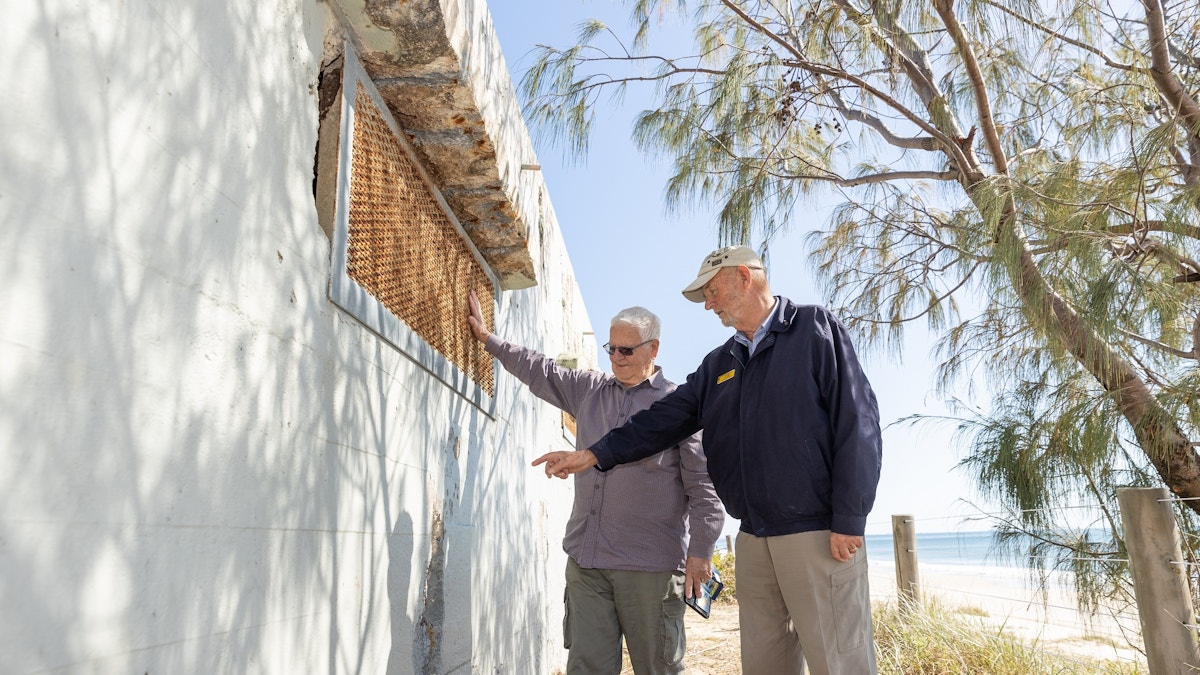


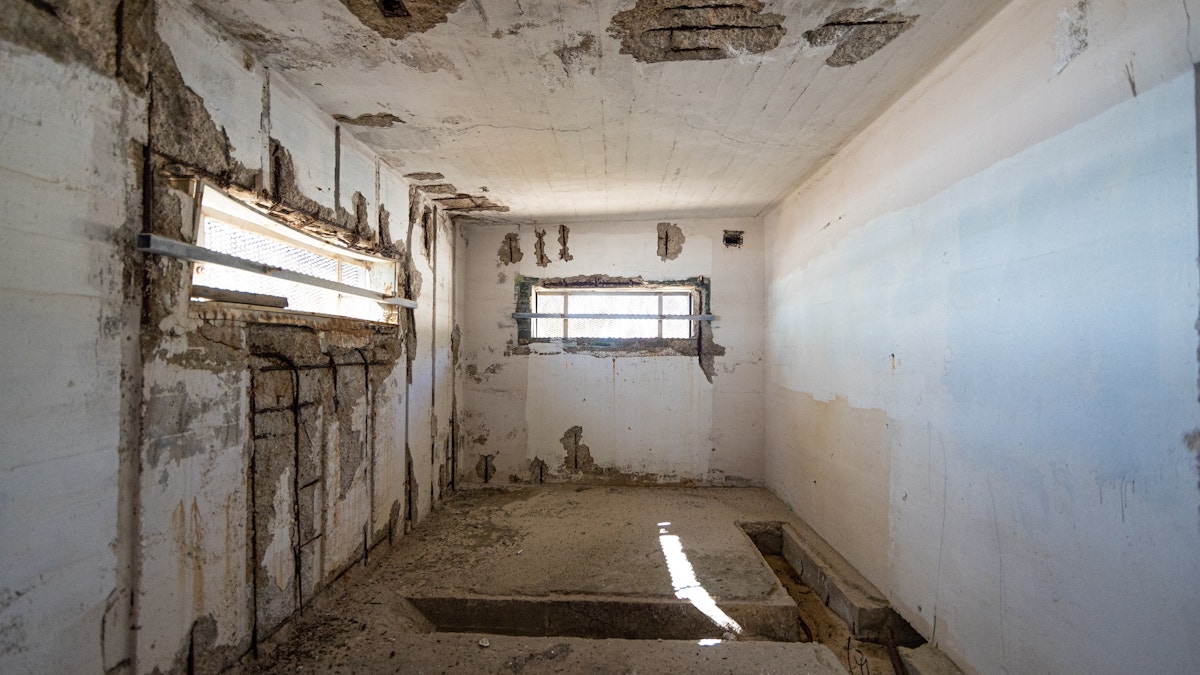
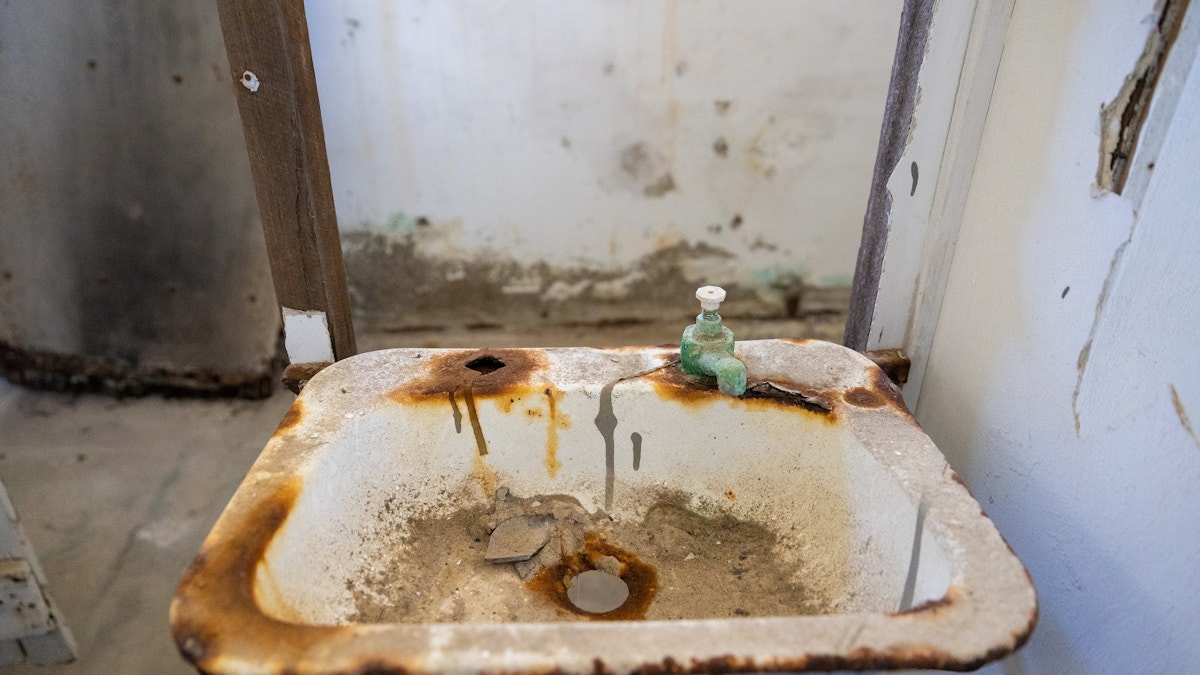


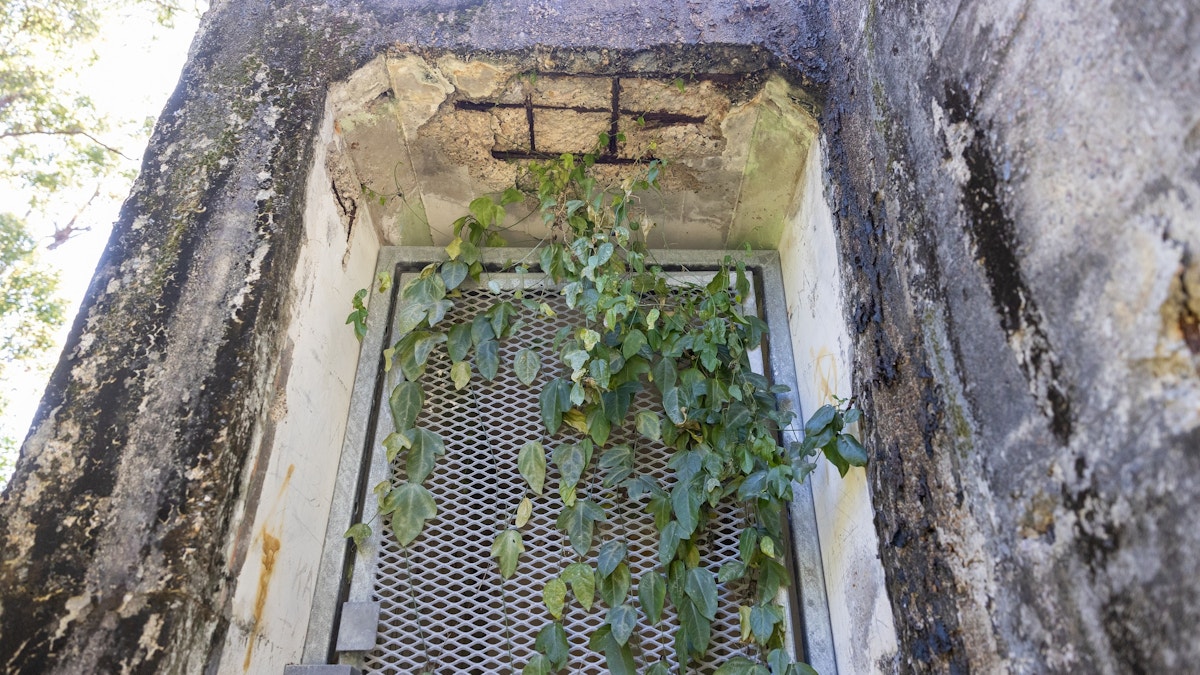
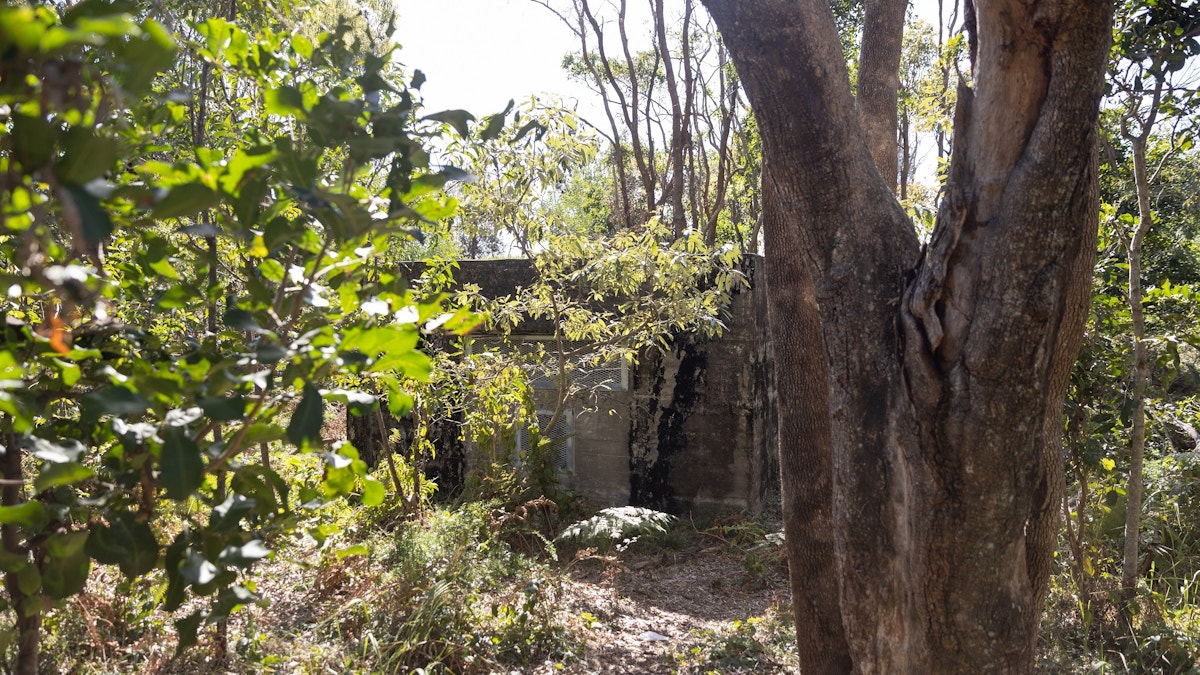













































































Site’s potential
Barry and Graham can imagine the rooms restored with displays explaining how they were used and Bribie’s vital role during the war. Displays could also illustrate the other huge gun emplacement structures that used to be on the island and have since disappeared.
“It’s got a lot of potential,” Graham says.
The indicator loop cable is still visible in the floor and the rooms offer an insight into how personnel manned the post during the war.
“There is now a very rapid rate of deterioration so if something is not done now, in a year’s time, it will need to be pulled down,” Barry says.
|“It is of great historical significance to the history of Australia so it will be a great loss to future generations if nothing is done and it is lost. They will be asking why it wasn’t saved?|
“There are rules about what can be done to the structures because they are heritage-listed but it is pointless if they are allowed to disintegrate and disappear.
“There must be some flexibility with Heritage listing rules to do the basic refurbishment that is required to save them.”
Graham is preparing a submission to the State Government, the responsible Minister and the State Member for Pumicestone.
“There’s a great deal of interest and people are wondering why we sitting around and no one’s doing anything about it.”
The Historical Society believes a small amount of money could restore and preserve the structures, and if Fort Lytton has been preserved, why can’t something be done to save this “more important structure on Bribie Island”.
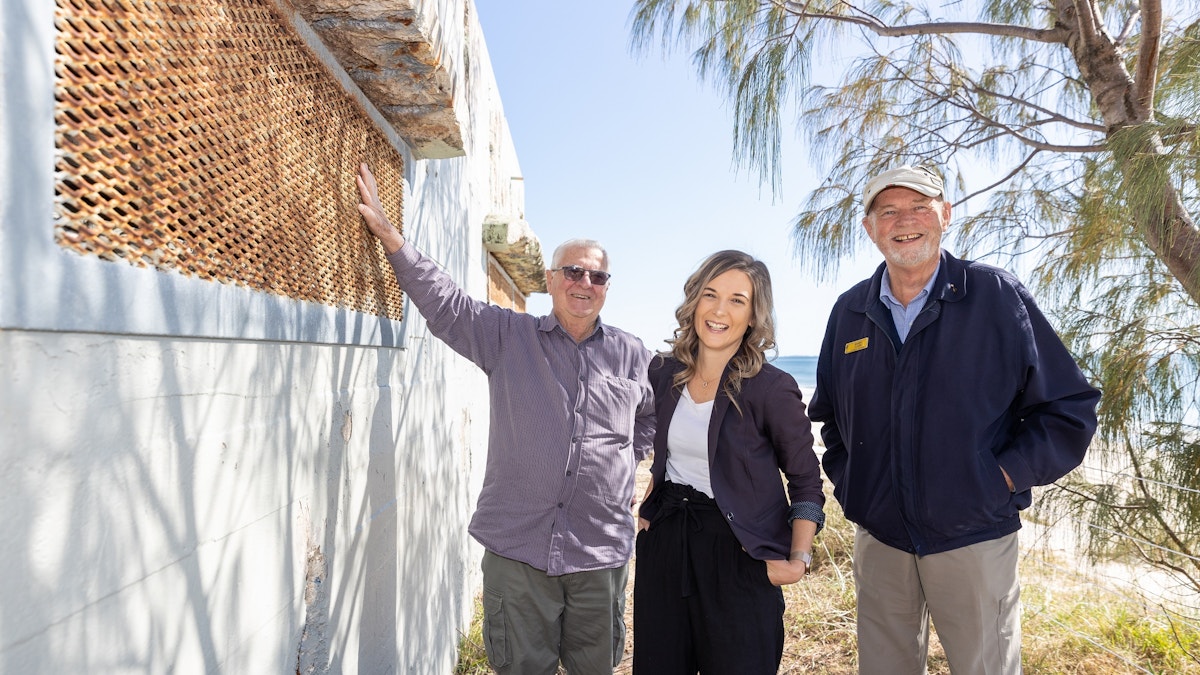
Councillor supports bid
Moreton Bay Regional Councillor Brooke Savige (Div 1) says she is personally “very keen to see them protected”.
Cr Savige says the structures demolished were outside Moreton Bay Regional Council’s jurisdiction and were in the Sunshine Coast Council area. The decision to ‘collapse’ the structures was made by the State Department of Environment and Science
“They are an intrinsic part of Bribie regardless and we have strong interest in what happens with them,” Cr Savige says.
“Council has already invested in trying to protect these structures, with the sandbagging done (in 2011).”
She says council has recently attempted to engage with the State Government about what needs to be done to save the structures.
|“We have a shared vision (with the Historical Society) and want to see these things protected but we need the State Government to make it happen,” she says.|
“There has been no response yet at a (council) officer level. I’m really keen to support the Historical Society with its application to the State Government and State Member Ali King.
“I think council have been very keen to protect it to-date. I don’t foresee that would change unless we have very strong advice to the contrary. I would be very keen to protect and maintain it.”
She spoke with Barry and Graham last Thursday and has asked to be kept informed of their progress and will support where she can.
“I will continue to make representations to the State Government that we need to do something proactive,” Cr Savige says.

What the State Government says
Moreton Daily’s questions were referred to the Department of Environment and Science. In a statement, a spokesperson said:
“The ex-military fortifications on Bribie Island National Park date back to mid last century. They were important to the defence of Brisbane and were strategically located near Bribie Island's northern tip to secure the shipping passage south,” the statement explained.
“These structures were built for a temporary purpose using concrete and steel reinforcing. Given their age and location, with many located close to the high coastal erosion prone zone, natural elements and the changing coastal environment have taken their toll.
“Works were recently undertaken to make two high-risk structures safe, and due to their age and poor structural integrity the buildings largely crumbled.
“The way the buildings collapsed highlighted the significant safety risk they would have posed to the public if action was not taken.
“The department maintains the structures to the best of its ability and in the case of Fort Bribie, has invested $90,000 since 2018 to ensure its structural soundness and improve the local walking track.
“As part of our ongoing commitment to visitor safety around the Fort structures, QPWS continues to maintain the safety barriers, railings and walking track near the fortifications.
|“The department is committed to ensuring Bribie Island National Park’s dynamic landscape and unique coastal biodiversity is protected and remains in its natural state and there are no plans to interfere with the natural coastal processes that are impacting the WWII fortifications.|
“This historical fortification has been recorded through images, maps and 3D modelling so that it’s important role in protecting Brisbane can be appreciated now and into the future. For more information, visit http://bit.ly/Fort_Bribie_Story_Map_”
Related Stories
Top Stories

Vote for Moreton Bay Art Prize people’s choice award
There’s still time to vote for your favourite piece in this year’s Moreton Bay Art Prize exhibition.


Popular Stories

'Priority' given for Waraba plans
Waraba, formerly known as Caboolture West, will be the 36th Priority Development Area in Queensland, unlocking land for 30,000 new homes and an estimated 70,000 new residents.

Trai Fuller: ‘It’s always felt like home’
Praised by Wayne Bennett for his courageous style of play and loved by long-time Dolphins fans, Trai Fuller has locked in a two-year deal with the club he calls home. He tells us why it means so much to him

4 Ingredients author to share her favourite recipes
Best-selling author behind the hugely successful 4 Ingredients cookbooks, Kim McCosker, will share three of her favourite recipes when she takes to the stage at this year’s Moreton Bay Food + Wine Festival. Find out what she plans to make here













